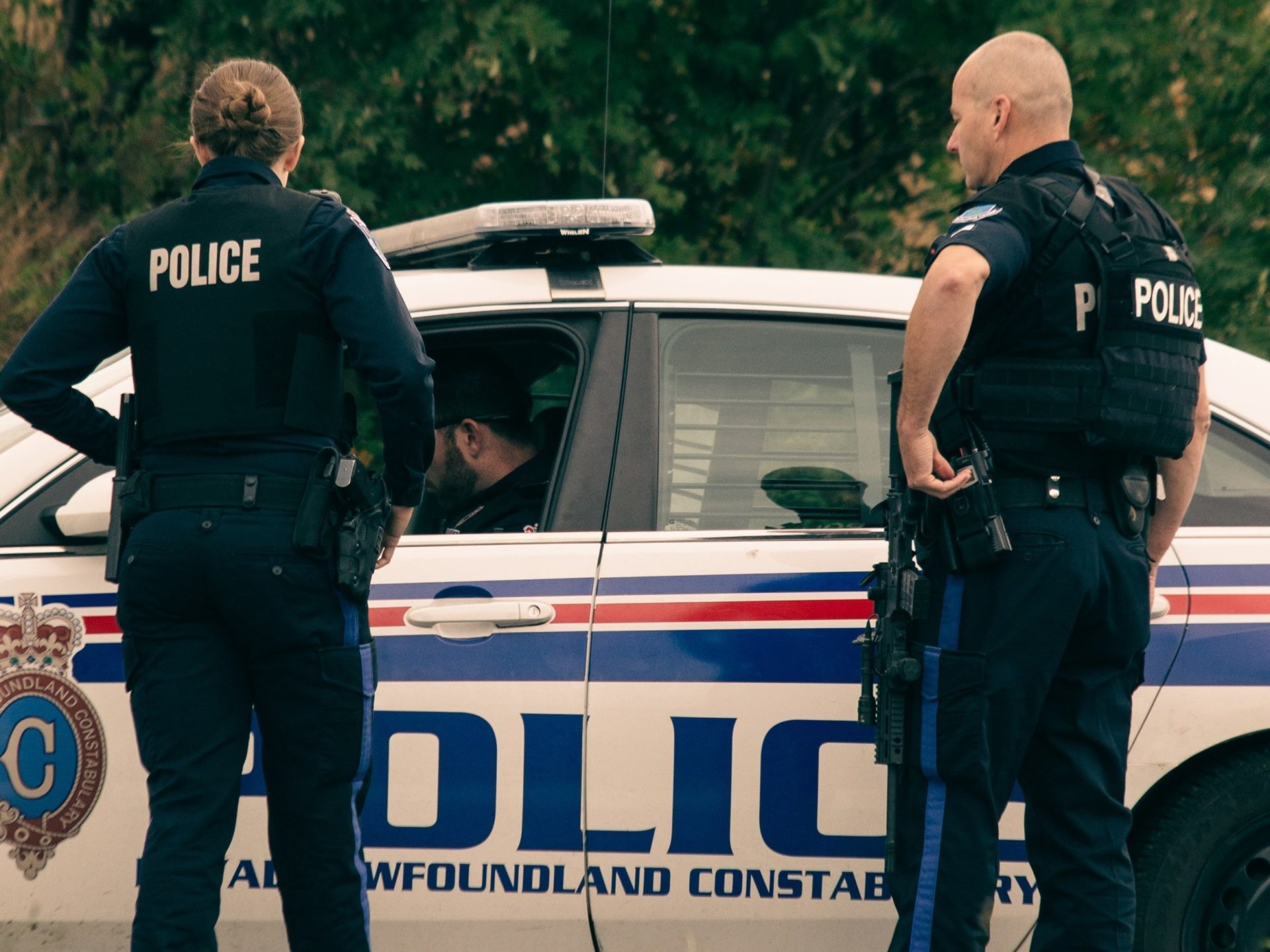
Ask any officer in the country about police shootings and they’ll tell you that officers can use deadly force to address an imminent threat of death or great bodily harm. For decades, police training has emphasized that officers should shoot “center mass” since the middle to upper torso is both the most reliable target – it is the largest part of the body – and the most effective, densely packed with vital organs. A 1965 FBI training film referred to this as “the kill zone,” but the branding has changed. Officers today use the phrase “shoot to stop” rather than the original “shoot to kill,” but the targeting protocol is still the same.
In 2019, the police department in LaGrange, Georgia started reviewing its deadly force policy and training. Two years later in February 2021, the agency bucked the policing norm by adopting a policy and training under which officers can – under certain conditions – aim lower and target the area between the belly button to the upper thighs. (For convenience, I will refer to this entire region as the “pelvic girdle”). Both the agency and its longtime chief, Lou Dekmar, have been showered with criticism for that decision, with John Edwards, the Executive Director of the Peace Officers Association of Georgia describing it as “open[ing] Pandora’s box.”
As a former officer and law professor who has studied and written extensively about police uses of force, I think some of that criticism is overblown, some is justified, and a startling amount is simply ignorant – a reaction to what commentators think the policy involves rather than a review of what the agency is actually doing.
In July 2021, in preparation for my later participation on an expert panel about the “shooting to incapacitate” approach, I traveled to LaGrange and went through the full course of training. And while I have some significant concerns, I’ve come to the conclusion that LaGrange’s approach shouldn’t be dismissed out of hand.
First, I want to be clear about what the “shoot to incapacitate” approach actually entails. The policy states:
When an officer has sufficient time and distance to effectively evaluate a deadly force situation, he may consider discharging his firearm in a manner that the anticipated result will be incapacitating to the suspect, rather than shooting at center mass. This tactic shall only be used if the circumstances permit. Officers shall not put themselves or another at increased risk in a deadly force encounter while performing an incapacitating shot.
The training that accompanies the policy—several hours of classroom instruction, dynamic scenarios with training ammunition, and a course of fire for qualification—makes clear that “shooting to incapacitate” means shooting at the pelvic girdle, not the arms, hands, lower legs, or feet.

What is lost in the commentary around this new policy is that shooting to incapacitate is emphatically not viewed as a non-deadly alternative to shooting center mass. Shooting someone in the pelvic girdle is less likely to kill, but it still carries a substantial risk of serious bodily harm or death. For that reason, the LaGrange Police Department (properly) views shooting to incapacitate as an application of deadly force. As one training slide puts it, “Deadly Force Must be Justified.”
In the face of a deadly threat, officers are never required to aim at the pelvic girdle rather than center mass; they are simply permitted to do so. Of course, that’s always been the case, even without a specific policy. The difference is that doing so is now explicitly authorized and officers get relevant training.
This is not to suggest that attempting to incapacitate is appropriate in all or even most situations. As the training makes clear, the technique is only appropriate when the situation that gives rise to a deadly threat involves a person with a melee weapon such as an edged weapon or blunt object. The training makes abundantly clear that this is not something officers should even consider when the armed subject has a gun.
And even when it is applicable, aiming for the pelvic girdle is not recommended for all such situations. The instructor who led my training session, Sgt. Joshua Clower, described how officers who have the luxury of time—such as while communicating with a subject holding a knife in an apparent “suicide by cop” scenario—can prepare in advance by drawing and aiming their firearms at the pelvic girdle. Alternatively, officers who are truly forced to respond in a split second—such as an officer who is unexpectedly attacked—may feel that shooting center mass is the better option. Ultimately, he emphasized, the decision about where to shoot is left to the officer.
There are a non-negligible number of police shootings every year where a policy like this could potentially make a difference. According to the Washington Post’s data on Fatal Force, of the 6,498 deadly police shootings between 2015 and 2021, almost a third (2,052, or 31.57%) involved a subject who did not have a firearm (1,107 had knives, 531 had “other” weapons, and 414 were unarmed). That dataset is limited, of course; there is no reliable information about how many non-fatal police shootings there are or about the number of situations in which officers could legally shoot but choose not to.
Still, it seems likely that at least some lives might be saved. Lives like that of Ronald McCormick. In September 2021, McCormick charged LaGrange Officer David Horseman with a machete. Horseman, initially discharged a TASER and, when that proved ineffective, targeted the McCormick’s “pelvic area and plan[ed] to ‘walk’ the bullets up toward his chest as needed.” McCormick was dropped to the ground almost immediately and, in early October, was released from the hospital to face charges. That incident demonstrates that, on some occasions, shooting to the pelvic girdle could preserve the lives of community members.
It is now widely agreed that the preservation of human life should be the highest priority in policing. On that basis alone, we should avoid reflexively dismissing the “shoot to incapacitate” approach.
But the real question surrounding this debate is this: Do the benefits outweigh the risks?
Answering that question is tricky, in large part because of the amount of variation in the more-than-18,000 police departments in the United States. The LaGrange Police Department has time and training resources that smaller or less-funded agencies simply cannot match.
And even at the best-resourced agencies, there are two significant categories of concern: effectiveness concerns and judgment concerns.
Effectiveness concerns.
A shot to the pelvic girdle only works if it hits. Officers are notoriously inaccurate even when aiming center mass, which raises the primary concern: officers who miss may fail to effectively stop an imminent deadly threat.
This is a real concern, but one more nuanced than it first appears. Most officers already train for the possibility that their initial shots will be ineffective, and if shooting center mass doesn’t stop the threat, officers train to shoot for an even smaller target: the head. Officers can, of course, do the same for shots to the pelvic girdle, and indeed, the LaGrange Police Department includes such “Failure to Stop” drills in its shoot to incapacitate training.
More importantly, though, accuracy is situationally dependent. There is good reason to think that officers are more accurate in some situations than in others. The challenge would be ensuring that officers make good decisions about when to shoot at the pelvic girdle and when to shoot center mass.
Concerns about officer judgment.
Perhaps the second most frequent concern about shooting to incapacitate relates to officer decision-making. The effects of stress on human-decision making are well-known – if often unquantifiable – and few situations will involve more stress than an imminent deadly threat.
Will officers in the field be able to make good decisions about whether to shoot to incapacitate instead of shooting center mass? Will the additional option extend the amount of time that an officer requires to make a decision, potentially exposing them to harm? Maybe. Maybe not.
While there are certainly examples of officers making poor, sometimes horrific deadly force decisions, there are at least as many—and, I think, likely far more—examples of officers who conduct themselves well under situations of immense pressure.
There is some irony here, too, as the “we can’t possibly trust officers to make this decision” objection comes almost exclusively from people who are otherwise quite willing to trust officers’ judgment.
I am more concerned about a different aspect of officer decision-making: lowering the threshold for officers to use deadly force. Although precise data are unavailable, there is reason to believe that officers do not shoot in some number of situations where shooting would be legally justifiable. If in some of those cases officers chose to shoot to the pelvic girdle instead of holding their fire altogether, we might see a decrease in the number of fatal shootings but an increase in the total number of shootings. Here, too, we lack reliable empirical information.
In considering these concerns – and any others – one point should be immediately apparent: these concerns are not unique to the “shoot to incapacitate” context. Concerns about effectiveness and officer judgment are ubiquitous in use-of-force discussions about everything from pressure points to takedowns to TASERs to neck restraints.
Personally, I am conflicted about the “shoot to incapacitate” approach. I admire Chief Dekmar and the men and women of the LaGrange Police Department for being willing to challenge what has long been taken as gospel by thinking outside the center mass box. Furthermore, I trust that they have made a well-considered, rational decision that the benefits outweigh the risk. At the same time, I’m troubled by the lack of empirical information that would ideally form the basis of most police policy-making.
All of that leads me to take the position that while other police agencies should not, at this point, rush to adopt a “shoot to incapacitate” approach, it certainly merits serious consideration.

Seth Stoughton
Seth Stoughton is an Associate Professor at the University of South Carolina School of Law and an affiliate Associate Professor in the Department of Criminology and Criminal Justice. He is a former police officer and the principal co-author of Evaluative Police Uses of Force.






